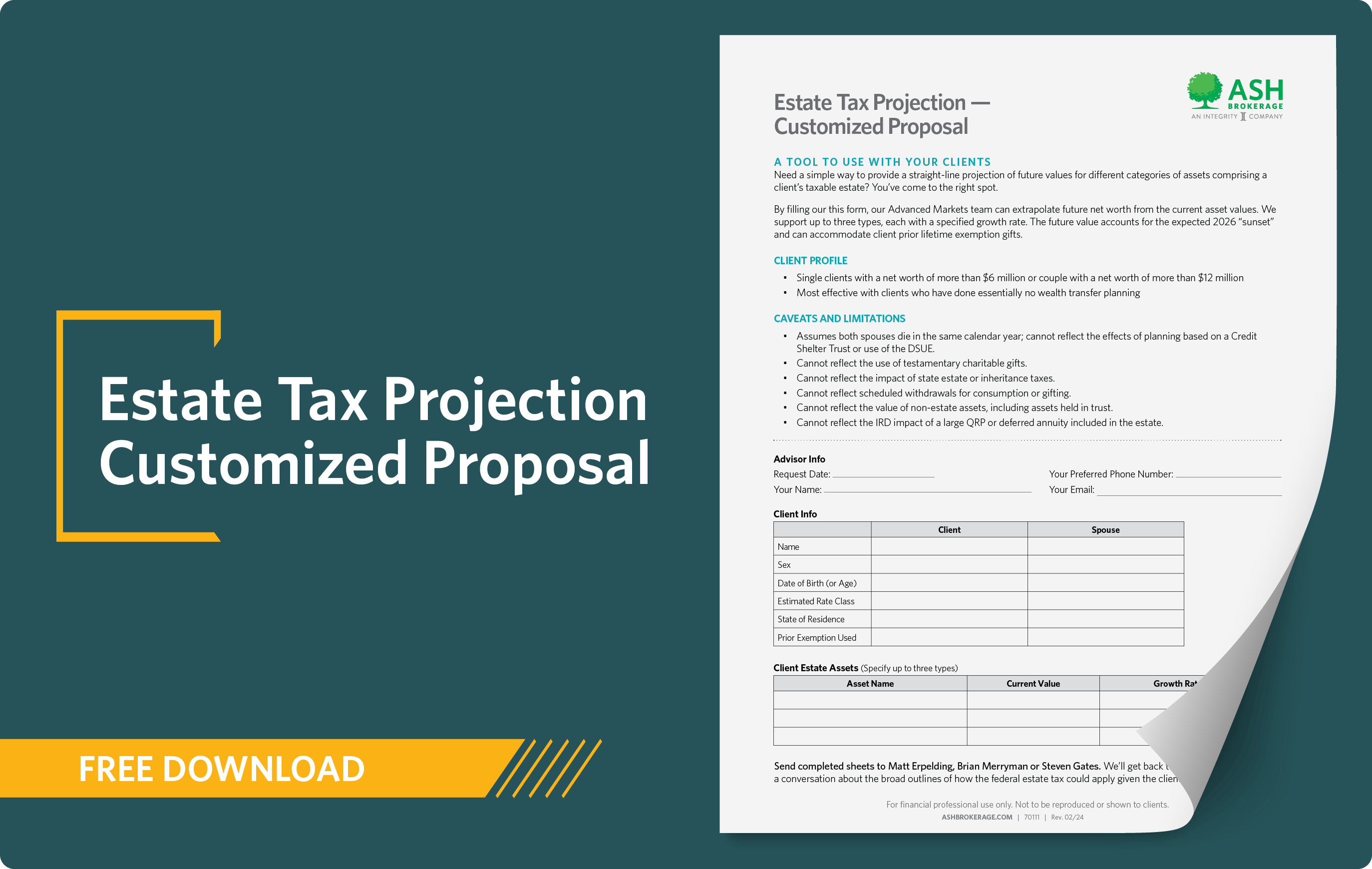All Categories
Featured
Table of Contents

Recognizing the various survivor benefit options within your acquired annuity is necessary. Carefully assess the agreement details or talk to an economic advisor to figure out the certain terms and the most effective method to wage your inheritance. When you inherit an annuity, you have a number of alternatives for receiving the money.
In some situations, you could be able to roll the annuity into an unique sort of individual retired life account (IRA). You can choose to receive the whole continuing to be balance of the annuity in a solitary settlement. This option provides prompt accessibility to the funds but includes major tax repercussions.
.jpg)
If the acquired annuity is a qualified annuity (that is, it's held within a tax-advantaged retirement account), you might be able to roll it over right into a new retired life account (Flexible premium annuities). You do not require to pay tax obligations on the rolled over quantity.
Do beneficiaries pay taxes on inherited Fixed Annuities
Various other kinds of beneficiaries generally need to take out all the funds within ten years of the proprietor's death. While you can not make added contributions to the account, an acquired IRA uses a useful benefit: Tax-deferred development. Revenues within the inherited individual retirement account collect tax-free up until you start taking withdrawals. When you do take withdrawals, you'll report annuity earnings in the very same means the plan individual would have reported it, according to the internal revenue service.
This alternative provides a consistent stream of income, which can be valuable for lasting economic planning. There are various payout choices available. Usually, you need to begin taking circulations no greater than one year after the owner's death. The minimum amount you're called for to take out every year afterwards will be based on your own life expectancy.

As a beneficiary, you will not undergo the 10 percent internal revenue service early withdrawal charge if you're under age 59. Trying to compute taxes on an inherited annuity can feel complicated, however the core principle focuses on whether the contributed funds were previously taxed.: These annuities are funded with after-tax bucks, so the beneficiary usually doesn't owe taxes on the initial payments, but any kind of profits accumulated within the account that are dispersed are subject to average earnings tax.
How is an inherited Annuity Death Benefits taxed
There are exemptions for spouses that acquire qualified annuities. They can generally roll the funds into their very own IRA and defer tax obligations on future withdrawals. In either case, at the end of the year the annuity business will submit a Type 1099-R that demonstrates how much, if any type of, of that tax year's circulation is taxable.
These tax obligations target the deceased's complete estate, not simply the annuity. However, these tax obligations usually only effect large estates, so for most successors, the focus ought to get on the revenue tax obligation ramifications of the annuity. Acquiring an annuity can be a complex but potentially monetarily helpful experience. Comprehending the terms of the agreement, your payment alternatives and any tax obligation ramifications is key to making notified choices.
Tax consequences of inheriting a Annuity Withdrawal Options
Tax Therapy Upon Fatality The tax treatment of an annuity's death and survivor advantages is can be rather made complex. Upon a contractholder's (or annuitant's) death, the annuity might undergo both income tax and estate taxes. There are various tax therapies relying on who the beneficiary is, whether the owner annuitized the account, the payout method chosen by the beneficiary, and so on.
Estate Tax The federal inheritance tax is an extremely progressive tax obligation (there are lots of tax obligation brackets, each with a greater rate) with prices as high as 55% for large estates. Upon death, the IRS will consist of all building over which the decedent had control at the time of fatality.
Any tax obligation in extra of the unified credit report is due and payable nine months after the decedent's fatality. The unified credit will fully shelter relatively small estates from this tax obligation. For several clients, estate taxes may not be a vital problem. For bigger estates, nonetheless, inheritance tax can impose a huge worry.
This discussion will concentrate on the estate tax therapy of annuities. As was the situation throughout the contractholder's lifetime, the internal revenue service makes a crucial difference between annuities held by a decedent that are in the accumulation phase and those that have actually entered the annuity (or payment) phase. If the annuity is in the accumulation stage, i.e., the decedent has not yet annuitized the agreement; the full fatality advantage guaranteed by the agreement (including any improved survivor benefit) will be consisted of in the taxed estate.
Tax implications of inheriting a Lifetime Annuities
Instance 1: Dorothy owned a repaired annuity agreement issued by ABC Annuity Business at the time of her fatality. When she annuitized the agreement twelve years back, she selected a life annuity with 15-year period certain.

That value will certainly be consisted of in Dorothy's estate for tax functions. Upon her death, the repayments stop-- there is absolutely nothing to be paid to Ron, so there is nothing to consist of in her estate.
Two years ago he annuitized the account choosing a life time with cash reimbursement payment option, naming his daughter Cindy as recipient. At the time of his death, there was $40,000 primary staying in the agreement. XYZ will certainly pay Cindy the $40,000 and Ed's executor will consist of that amount on Ed's estate tax return.
Given That Geraldine and Miles were wed, the advantages payable to Geraldine represent property passing to an enduring spouse. Variable annuities. The estate will certainly be able to utilize the endless marriage deduction to prevent taxation of these annuity advantages (the worth of the advantages will be listed on the inheritance tax form, together with a balancing out marital reduction)
How does Long-term Annuities inheritance affect taxes
In this situation, Miles' estate would consist of the worth of the staying annuity payments, yet there would certainly be no marriage deduction to counter that inclusion. The very same would apply if this were Gerald and Miles, a same-sex pair. Please keep in mind that the annuity's remaining value is determined at the time of fatality.

Annuity agreements can be either "annuitant-driven" or "owner-driven". These terms refer to whose death will cause repayment of fatality benefits. if the agreement pays death advantages upon the death of the annuitant, it is an annuitant-driven contract. If the death advantage is payable upon the fatality of the contractholder, it is an owner-driven contract.
There are scenarios in which one person owns the contract, and the determining life (the annuitant) is someone else. It would certainly be nice to think that a specific contract is either owner-driven or annuitant-driven, but it is not that straightforward. All annuity contracts provided because January 18, 1985 are owner-driven since no annuity contracts released given that then will be provided tax-deferred condition unless it has language that sets off a payment upon the contractholder's death.
Table of Contents
Latest Posts
Breaking Down Your Investment Choices Everything You Need to Know About Pros And Cons Of Fixed Annuity And Variable Annuity What Is the Best Retirement Option? Features of Smart Investment Choices Why
Understanding Financial Strategies Key Insights on Your Financial Future Breaking Down the Basics of Investment Plans Features of What Is Variable Annuity Vs Fixed Annuity Why Choosing the Right Finan
Breaking Down Your Investment Choices A Closer Look at Fixed Vs Variable Annuity Pros Cons Breaking Down the Basics of Investment Plans Pros and Cons of Various Financial Options Why Annuities Fixed V
More
Latest Posts